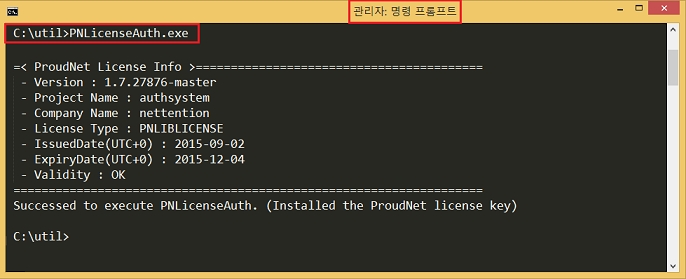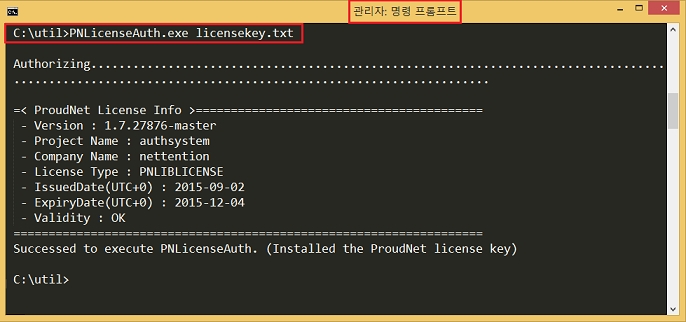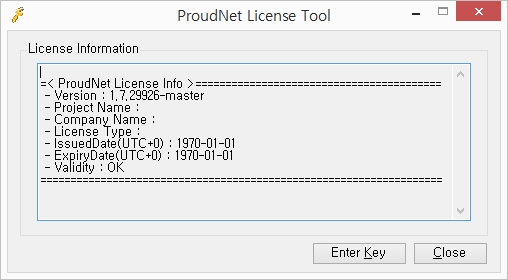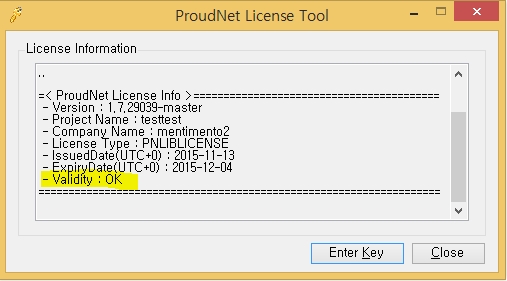How to verify your ProudNet license
1. How to check your ProudNet license
Linux is supported since version 1.7. Run the ProudNet\Util -> PNLicenseAuth.exe (Windows only), PNLicenseAuth (Linux only) verification program without any arguments.

2. How to authenticate licenses on Windows and Linux servers (version 1.7 and later)
On a Windows user's PC with the ProudNet library installed, locate the ProudNet\Util folder. The Util folder contains the PNLicenseAuth.exe (Windows only) and PNLicenseAuth (Linux only) verification programs.

Select the authentication program appropriate for the server operating system you wish to authenticate and copy it to the server's home directory or any other path.
Generate a licensekey.txt file with the license key for version 1.7 and copy it to the same home directory or any other path.
Run the verification program as an administrator (Administrator or Root authority) to attempt to verify the ProudNet license. When doing so, include the path to the license key file as an execution argument.
In ProudNet versions 1.6 and earlier, you must enter the license key, not the path to the authentication file, when running PNLicenseAuth.exe.
3. How to verify using the Console on Windows
Run the ProudNet installation file ProudNet Install on the Windows user's PC. (※ Library installation files for Linux are not provided).
When entering license keys, separate the license keys for 1.7 and later versions from those for 1.6 and earlier versions, as appropriate for your ProudNet installation version.

4. How to verify using the GUI on Windows
Run the PNLicenseAuthGui.exe authentication program in the folder where PNLicenseAuth.exe is located. The two executables must be in the same folder.

If you have an installed license, you can see the license information. However, if you don't have an installed key, click the Enter Key button to paste the license key you were issued.

Last updated